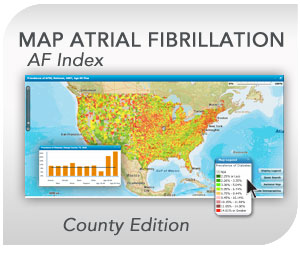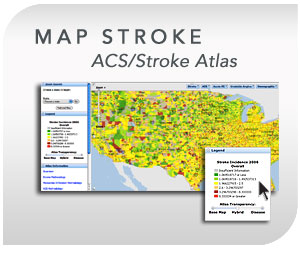Stroke Reports
Saturday, May 11th, 2013

Stroke: May 7, 2013 Despite the global impact and advances in understanding the pathophysiology of cerebrovascular diseases, the term “stroke” is not consistently defined in clinical practice, in clinical research, or in assessments of the public health. The classic definition is mainly clinical and does not account for advances in science and technology. Read more
Stroke Reports
Saturday, May 11th, 2013

STROKEAHA: May 7, 2013 Background and Purpose—Reliable comparisons of stroke incidence are important. To determine the impact of systematic assessment of patients referred with transient ischemic attack on the measured incidence and severity of stroke, we compared 2 population-based studies. Methods—Patients with first-ever stroke ascertained during 2006 through 2010 from the Dijon Stroke Registry and the […]
Stroke Reports
Saturday, May 11th, 2013

STROKEAHA: May 7, 2013 Background and Purpose—Up to 14% of all ischemic strokes occur in young adults (<50 years). Poststroke cognitive performance is a decisive determinant of their quality of life. However, virtually no studies report on cognition after young stroke, especially not on the long term. This long-term perspective is important because young patients have […]
Stroke Reports
Saturday, May 11th, 2013

STROKEAHA: May 7, 2013 Background and Purpose—Fluid-attenuated inversion recovery vascular hyperintensity (FVH) is often identified in patients with acute ischemic stroke. The purpose of this study was to determine the clinical significance of FVH in patients with transient ischemic attack (TIA). Methods—Consecutive inpatients with TIA who underwent MRI within 24 hours of symptom onset were studied. […]
Stroke Reports
Saturday, May 11th, 2013

Lancet Neurology: May 2, 2013 Background Many international guidelines on the prevention of venous thromboembolism recommend targeting heparin treatment at patients with stroke who have a high risk of venous thrombotic events or a low risk of haemorrhagic events. We sought to identify reliable methods to target anticoagulant treatment and so improve the chance of […]
Stroke Reports
Thursday, May 2nd, 2013

STROKEAHA: April 30, 2013 Background and Purpose—In-hospital stroke (IHS) differs from out-of-hospital stroke (OHS) in risk factors and outcomes. We compared IHS and OHS treated with thrombolysis from a large national cohort in a cross-sectional study to further clarify these differences. Read more
Stroke Reports
Thursday, May 2nd, 2013

STROKEAHA: April 30, 2013 Background and Purpose—Various risk score models have been developed to predict symptomatic intracerebral hemorrhage (SICH) after intravenous thrombolysis for acute ischemic stroke. In this study, we aimed to determine the prediction performance of these risk scores in a Taiwanese population. Read more
Stroke Reports
Thursday, May 2nd, 2013

Neurology April 30, 2013 Objective: We sought to determine the rate of urine toxicology screening, differences in testing, and outcomes among patients with stroke and TIA presenting to a tertiary care emergency department. Methods: In this retrospective cohort study, patients admitted with stroke or TIA to a single tertiary care stroke center between June 2005 and January 2007 […]
Stroke Reports
Thursday, May 2nd, 2013

CIRCOUTCOMES: April 29, 2013 Background—Prior studies found that only about half of stroke patients arrived at hospitals via emergency medical services (EMSs), yet since then, there have been efforts to increase public awareness that time is brain. Using contemporary Get With the Guidelines-Stroke data, we assessed nationwide EMS use by stroke patients. Read more
Stroke Reports
Thursday, May 2nd, 2013

STROKEAHA: April 25, 2013 Background and Purpose—We previously reported increased incidence of ischemic stroke among both blacks and whites with diabetes mellitus, especially in those aged <55 years. With rising prevalence of diabetes mellitus in the past decade, we revisit the impact of diabetes mellitus on stroke incidence in the same population (≈1.3 million) 5 and […]



































